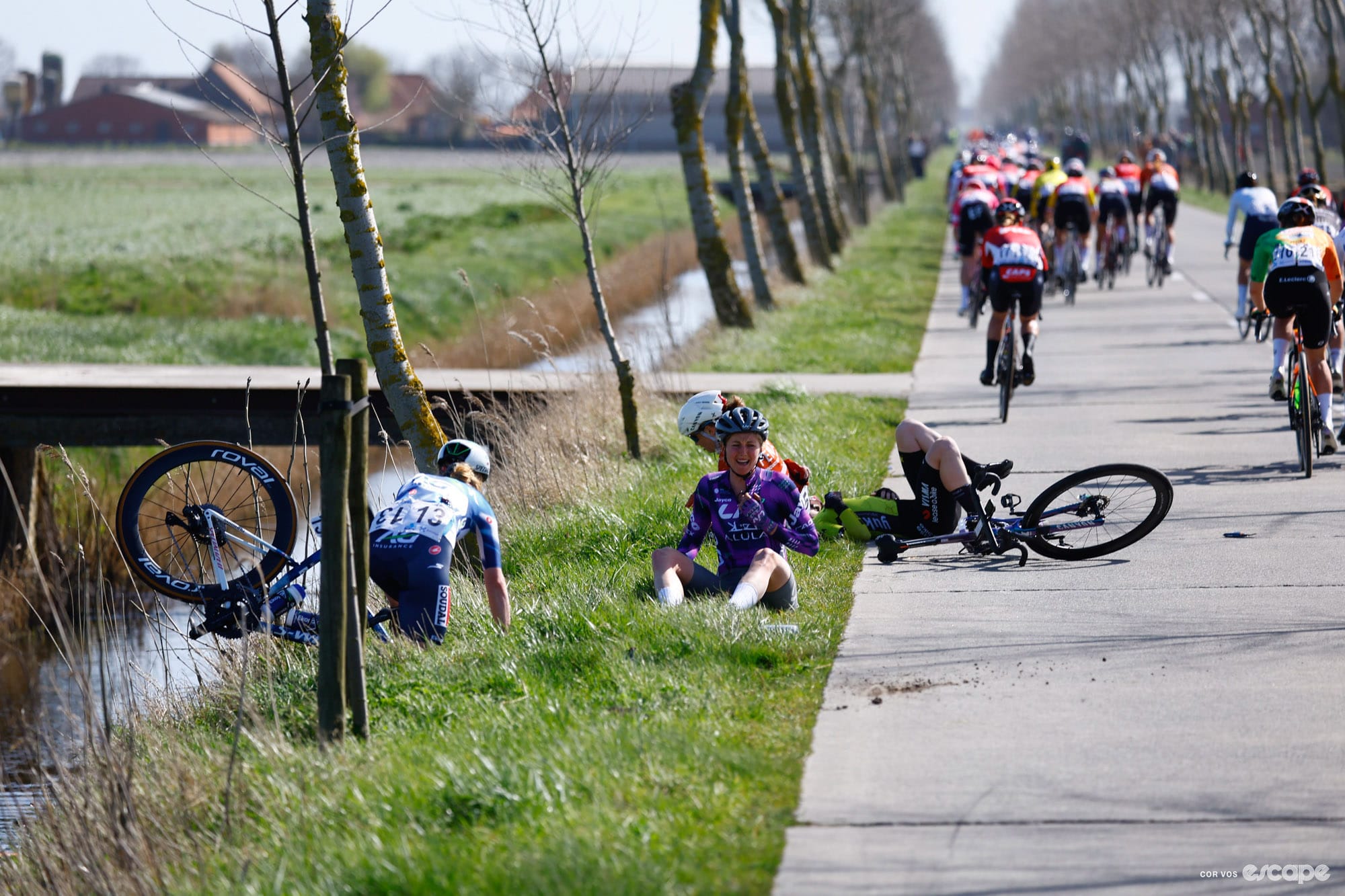We start the stage in Belgium and make our way to France, the third of three countries on this year's Tour de France Femmes itinerary. A little detour of just a few kilometers could have added a fourth to the race with Luxembourg but the organizers decided against that. It’s no mean feat to organize a bike race on public roads. You need the cooperation of local, regional, and national authorities so opting for one country fewer is understandable.
We enter France in the north. It’s not a very densely populated area. Imagine those small sleepy villages where nothing really happens, apart from the exuberant 14 Juillet national holiday. These villages faced a small revolution earlier this year. A new law in France mandates that every house needs an address. Sounds logical but in the countryside, the indication of an address sometimes goes no further than the name of the lieu-dit (hamlet), hameau (hamlet), or bourg (village).
On the spot, you then have to search with directions such as "behind the church," "diagonally across from the farm," "second right after the school," etc. This is inconvenient not only for tourists trying to get to their destination, but also for postmen, parcel deliverers, and service providers such as utility and telephone companies. France is currently implementing large-scale fiber internet throughout the countryside. And think of the emergency services who need to get somewhere as fast as they can. So in 2024 every house in France gets an address. It was quite necessary.
According to the daily Le Monde, more than three million households and businesses in France did not have an exact address by the end of 2019. The new law, the "3DS," required the more than 5,000 municipalities with less than 2,000 inhabitants to name their streets, number the buildings, and upload this data into a state database by June 1, 2024. The larger towns already had this obligation.
The mayor (and no matter how small the town, there is a mayor) may determine the size and model of street name signs. The choice of street names is made by the municipal council. It’s important to distinguish these tasks. Democracy of course. The most common names are Grande Rue (Grand Street), Rue Principale (Main Street), Rue de l'Eglise (Church Street), and Rue de la Gare (Station Street).
Until the 12th century, streets were named after the craftsmen who worked there, such as bouchers (butchers) or tanneurs (tanners). After that, streets and squares were named after important people. Immediately after the French Revolution, street names were in vogue that included words like liberté (freedom) or sansculottes. According to a newspaper, 33% of streets were named after a person, of which only 6% were named after women.
In a small village in the Dordogne, in the south of France, the town council has officially renamed a small road in a village the "Rue Sans Nom." This is not a street without a name. "La Rue Sans Nom" is the official name of the road. It is even officially written on the street sign. According to the mayor there were no other names. “When we got to the end, we said to ourselves, 'So this street without a name, what are we going to call it?' So, we said, 'We'll call it the Rue Sans Nom,'” he said. Mais pourquoi pas?
Did we do a good job with this story?





